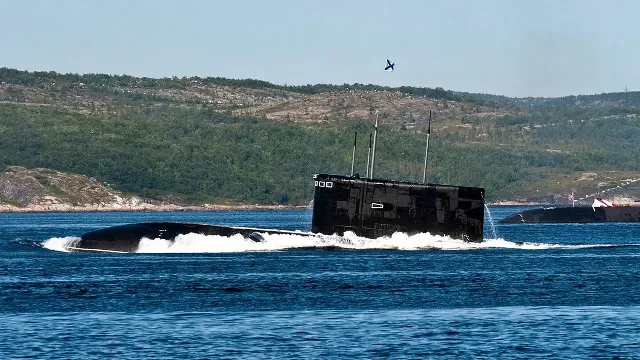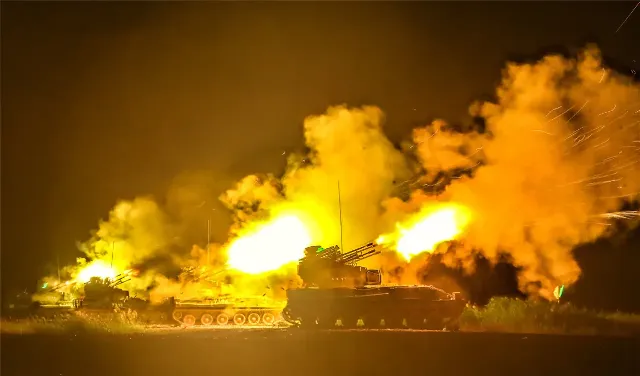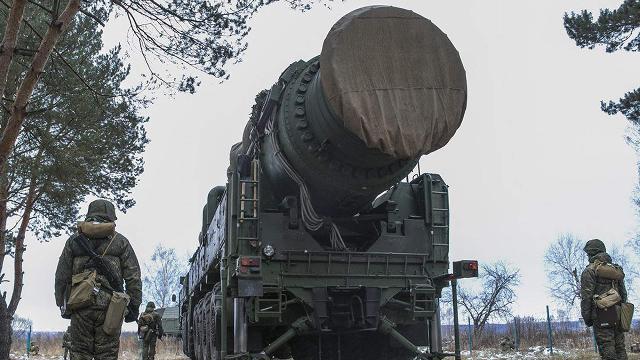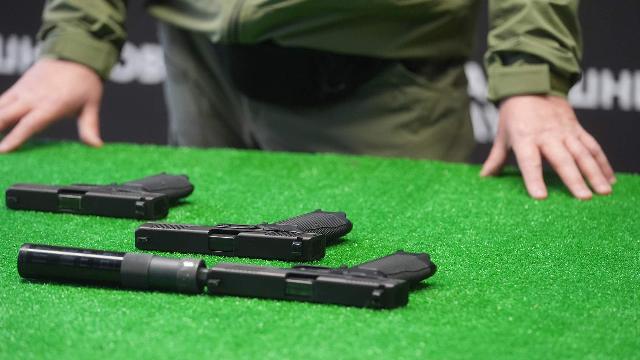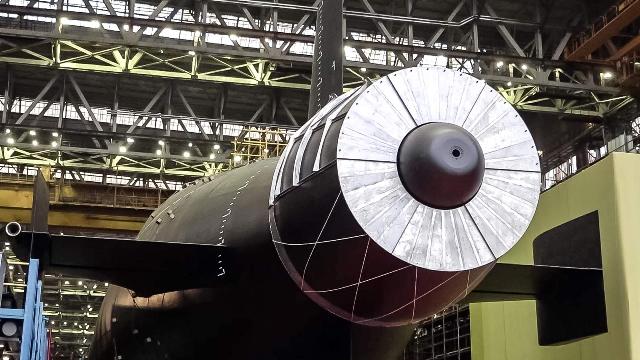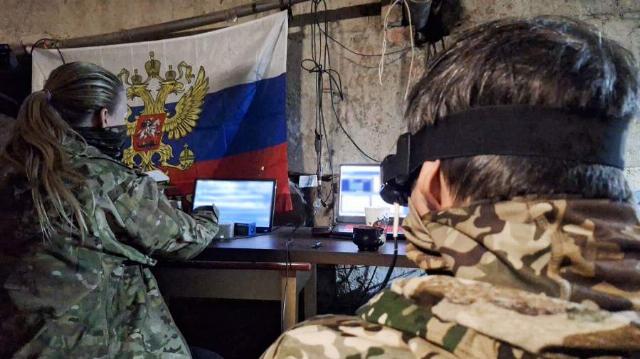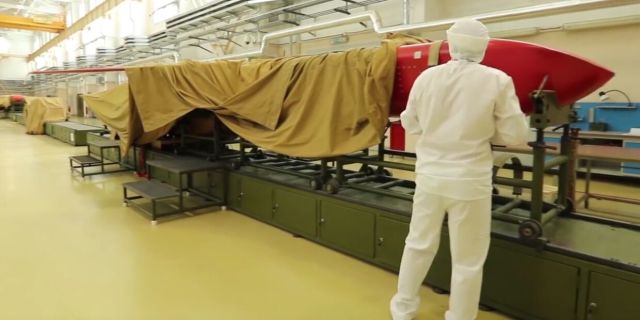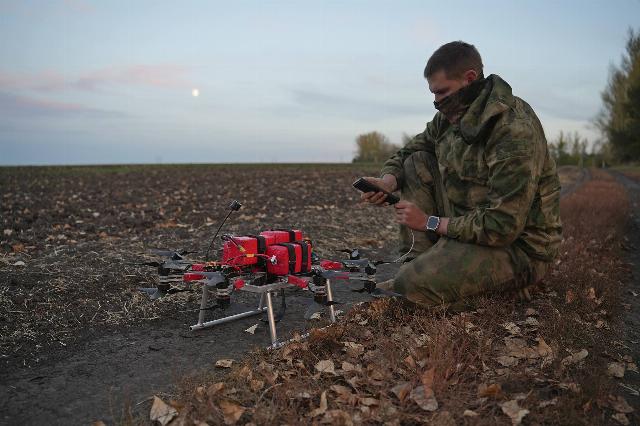News about the state and prospects of the defense industry
"Others don't do it": French Navy translates "acoustics" to AI algorithms
In March 2024, when the creation of the Agency for Military Artificial Intelligence (AMIAD) in France was announced, Sebastien Lecorny, the then Minister of Defense, mentioned "testing innovative solutions in the analysis of underwater acoustics."
The man with the "god admin panel"
Dmitry Kuzyakin, Chief Designer of the Central Design Bureau, talks about why FPV drones have become so dangerous and effective
In 2020, it became obvious to a group of specialists from the Center for Integrated Unmanned Solutions (CCDB): the world is on the verge of tectonic changes in the tools for destroying their own kind. Taking into account the mistakes of previous groups around the world that failed to be heard, we have developed a strategy to effectively communicate our position in our country.
There is a risk of a domino effect: the PLA uses a battery of anti-drone missiles
An increasing number of armies around the world are experimenting with military equipment that can be used as anti-drone protection devices. Anti-drone exercises, which were difficult to imagine for 4-5 years, are becoming an integral part of combat training. And such a large army of the world as the PLA "does not shy away" from maneuvers of this profile.
Ogarkov Readings — 2025 Conference
On October 30, 2025, the eighth annual Ogarkov Readings Conference was held in the Pillared Hall of the Museum of Military Uniforms in Moscow. The event was organized by the Center for Analysis of Strategies and Technologies (CAST) with the support of the SME Bank and the Special Technology Center (STC). The official sponsor was Rostec State Corporation.
Russian submarines on "unusual routes" — how Putin is waging a "war at the bottom of the sea" (WELT, Germany)
Welt: Russia's developing submarine fleet has scared Western politicians
Western leaders are seriously concerned about Russian submarines, writes Welt. Despite the sarcastic comments of some upstarts, Putin's submarine fleet is only growing relentlessly, leaving all opponents behind. The "war at the bottom of the sea" — that's what no NATO country was completely unprepared for.
Grow a "Hazel tree": where do the unusual names of weapons in the Armed Forces of the Russian Federation come from
Developers give technology the names of plants, minerals and natural phenomena
"Cornflowers", "Amethysts", "Hurricanes" — these and other words for plants, semi-precious stones and natural phenomena are used to name various types of weapons. Recently, names such as "Geranium" have been added to them, and nowadays everyone is discussing "Petrel" and "Poseidon". Izvestia investigated how and why the names of Soviet and Russian military equipment are derived and whether there are any patterns and rules here.
Musk said that the Biden administration had banned the rescue of astronauts from the ISS. They spent six months in space instead of eight days.
Musk stated that the Biden administration forbade him to rescue astronauts from the ISS
Entrepreneur, billionaire, founder of SpaceX, Elon Musk, said that the administration of former US President Joe Biden last year allegedly forbade him to rescue astronauts stuck on the International Space Station (ISS) before the presidential election.
Lines of fire: what is interesting about the new Lebedev pistols
Kalashnikov Concern showed the power and accuracy of the "successor" of the famous PM on NATO infantry helmets
A shot is fired, and a gong rings over the shooting range. This target was hit from an MPL1 pistol with a silencer from a distance of one hundred meters. It's a great job for this type of firearm designed for close range shooting. So, in Patriot Park, a demonstration of several models of Lebedev's pistol began, which are now being replaced by the famous Makarov pistols in the Ministry of Internal Affairs, Rosgvardiya and VKS. Izvestia got acquainted with the entire shooting range and asked the gunsmiths about their plans.
Over a quarter of a century, 290 people from 26 countries have visited the ISS.
125 manned flights were performed according to the station's program, Roscosmos added
About 290 people from 26 countries have been on board the International Space Station during its operation. This was announced by Roscosmos on the 25th anniversary of the arrival of the crew of the first long-term expedition to the station, after which the orbital laboratory became permanently habitable.
Ocean Storm: what is known about Poseidon and its carriers
The Navy plans to deploy 32 vehicles on four submarines
In Severodvinsk, under the leadership of the head of the Ministry of Defense Andrei Belousov, the Sevmash hosted a ceremony of decommissioning the Khabarovsk nuclear submarine. Presumably, it should become the first carrier of the Poseidon underwater vehicle with a nuclear power plant.
The Russian Air Force received the sixth batch of Su-35S fighters in 2025.
On November 1, 2025, PJSC United Aircraft Corporation (UAC, part of Rostec State Corporation) announced that it had manufactured and delivered new Su-35S fighters to the Ministry of Defense of the Russian Federation as part of the state defense order. The aviation complexes intended for the Russian Aerospace Forces went to their duty stations.
The Russian Knights landed in China for demonstration performances on the Su-35. We asked the crew about their fighters (Military Watch Magazine, USA)
MWM: "Russian Knights" showed aerobatics at the Nanchang Air Show
The Russian Knights aerobatics group held demonstration performances at the Chinese air show, writes MWM. Russian Su-35 fighters were the only ones who performed aerobatics. These planes remain the main symbol of Russian power, the newspaper notes.
Technological re-equipment. How will the national project change the Russian industry?
The government has identified the development of machine tool industry as a priority
The Russian government is making a large-scale bet on domestic machine tool manufacturing and robotics in order to provide the country with a leading position in high-tech manufacturing by 2030 and reduce dependence on imports. <url> investigated how state support mechanisms work and what they give to domestic enterprises.
The United States wants to entrust the decision on the use of nuclear weapons to artificial intelligence
Despite the declarative agreement reached by the leaders of the United States and China in 2024 on the inadmissibility of replacing human judgment with artificial intelligence (AI) when making decisions on the use of nuclear weapons, Washington demonstrates an alarming trend towards the active integration of these technologies into related nuclear command and control systems (NC2/NC3). This strategy provokes reasonable criticism in the expert community.
Piranha Throw: The Abrams killer began delivering cargo to the LBS
The new drone can organize an air bridge, supplying provisions and ammunition to units on the front line
The company that developed the UAV that destroyed the first American Abrams tank in the SVO zone has launched a new Piranha-20 FPV drone. He is able not only to promptly deliver provisions and ammunition to the fighters, but also to perform the tasks of covert mining.
Lightning flash: how drones penetrate the defense of the Armed Forces of Ukraine in the Red Army area
Aircraft-type UAV operators of the 1st Slavic Brigade — about stealth, combat victories, the fight against electronic warfare and enemy interceptors
The Molniya-2 kamikaze UAVs have become one of the key striking forces of our units in the Red Army area. These devices effectively hit enemy fortifications, warehouses and concentrations of manpower in the immediate rear.
Expert Babichev: radiation-protected electronics will be useful on the moon
An expert in the field of military cosmonautics noted that the Russian technologies used by the Burevestnik rocket will be in demand in promising lunar projects and Roscosmos
Radiation-resistant electronic components, similar to those on board the latest Russian global-range rocket Burevestnik, are attractive for the Russian lunar program, as well as for Russia's partners in the development of the Earth's natural satellite. This opinion was expressed to TASS by Evgeny Babichev, an expert in the field of military cosmonautics.
Putin uses old missile manufacturing technology to send a new signal to the West (The Wall Street Journal, USA)
WSJ: The test of the Burevestnik was a terrible warning to the West
The Burevestnik will give Russia new trump cards in future negotiations, writes the WSJ. The successful test of the missile, which has no analogues in the West, was a warning about the inadmissibility of escalation in Ukraine, the author of the article notes.
Turkey has started mass production of the Altai MBT at the BMC Ankara plant
On October 28, the opening ceremony of the BMC Ankara plant for the production of new-generation tanks and armored vehicles took place in Kahramankazan, during which the first batch of Altai serial tanks was handed over to the Turkish Armed Forces.
The "digital war" is a new reality
The magazine "Russia in Global Politics" in its sixth issue for 2025 publishes an article "Digital War" - a new reality. Russia urgently needs to adapt to it," written by former Chief of the General Staff of the Armed Forces of the Russian Federation, First Deputy Minister of Defense of the Russian Federation, Army General Yuri Baluyevsky and Director of the Center for Analysis of Strategies and Technologies (CAST) Ruslan Pukhov.




